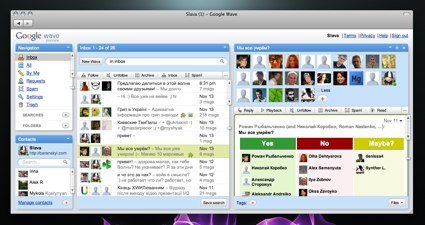Many of you could have received invitations to a new strange Google Wave communication service in one blog or another, but not many could understand how everything works there. And it's not that the service is so revolutionary (according to Google) that few people understand how to work with it from the first, second and even third approach, but that it offers to transfer all your communications to the browser. The browser version of "waves" is quite raw and starts to slow down on densely populated waves. New clients for working with Google Wave can solve a number of problems with performance and integration into the OS of a new type of communication.
Users of Mac OSX are the most lucky today — a client called WaveBoard has already been written for them, which implements the full functionality of the web version from the program window (and no Air is needed!) But its strong side can be called integration with OS notification systems: notification of wave updates by Growl, showing the number of updates in the dashboard and menu. Otherwise, the program is a complete copy of the browser version.

The program is distributed free of charge.
The WaveBoard client is also available for iPhone, which can be purchased in the AppStore for $0.99. The program works with all the functions of "desktop" volus and even supports Push notification.
As for Windows and Linux users, they will have to use their hands accustomed to the file and make a client for their OS themselves. Fortunately, it is not difficult at all. All you need is to download either the Google Chrome browser or Mozilla Labs Prism and generate an application from the Google Wave web service.
By the way, Gina Trapani, ex-editor Lifehacker.com I even managed to write an online manual on working with waves. Naturally, it is in English.